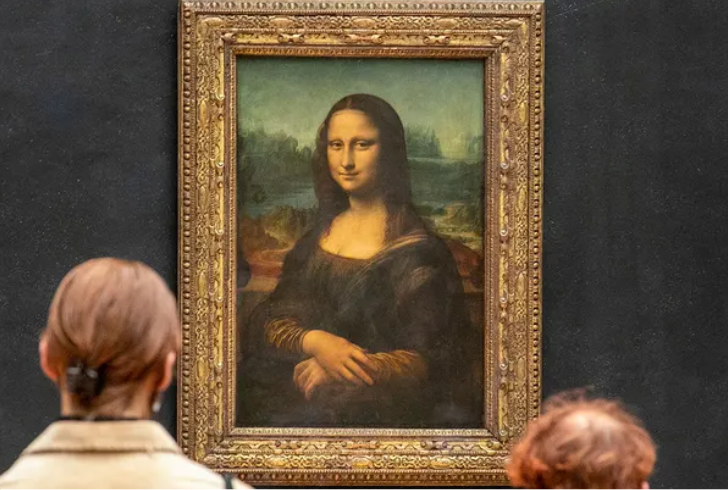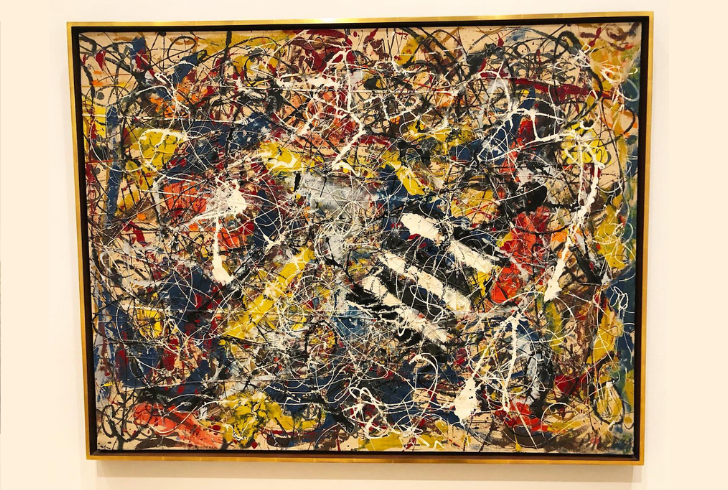In the ever-evolving world of art, certain masterpieces stand out not only for their historical significance but also for their staggering price tags. That being said, the debate about the most expensive painting in the world often sparks curiosity and awe.
Let's explore some of the most remarkable and costly artworks that have graced the art world in 2024.
What Is the Most Expensive Painting in the World
1. "Mona Lisa" by Leonardo Da Vinci

foxnews.com | Leonardo Da Vinci’s "Mona Lisa" is the most expensive painting in the world.
The "Mona Lisa," painted by the Italian Renaissance maestro Leonardo Da Vinci, holds the title for the most expensive painting in the world. This iconic artwork, featuring the enigmatic smile of a woman, has long captivated audiences with its mystique and beauty. It is renowned not only for its artistic value but also for its historical journey. After being exhibited in various locations over the centuries, it was sold for an unprecedented amount, reflecting its enduring allure and cultural significance.
Key Features:
- Artist: Leonardo Da Vinci
- Price: $870 Million
- Significance: Represents beauty, power, and mystery in Western art history
2. "Interchange" by Willem De Kooning
Willem De Kooning's "Interchange" stands out as a prime example of abstract expressionism. Created in 1955, this vibrant piece features dynamic brushstrokes and a swirling array of colors. De Kooning’s shift from figurative to abstract urban landscapes is vividly portrayed in this painting. It was acquired by Kenneth C. Griffin, a prominent art collector, underscoring the painting’s value in the contemporary art market.
Key Features:
- Artist: Willem De Kooning
- Price: $300 Million
- Significance: Marks a transition in De Kooning's career and exemplifies abstract expressionism
3. "Salvator Mundi" by Leonardo Da Vinci
Leonardo Da Vinci's "Salvator Mundi," depicting Jesus Christ, achieved a record-breaking auction price of $450 million. This painting’s journey from being mistaken for a copy to its extensive restoration and eventual recognition as an authentic Da Vinci work highlights its significance. It is celebrated for its intricate portrayal and the artist’s masterful technique in capturing religious iconography.
Key Features:
- Artist: Leonardo Da Vinci
- Price: $450 Million
- Significance: Represents a significant part of Da Vinci's oeuvre, with historical and artistic relevance
4. "Nafea Faa Ipoipo" by Paul Gauguin
Paul Gauguin’s "Nafea Faa Ipoipo," painted in 1892, reflects the artist’s fascination with Tahitian culture. The painting, which translates to "When Will You Marry?", showcases Gauguin’s unique style and use of vibrant colors. The work captures a sense of exoticism and idealized paradise, making it a prized piece among collectors.
Key Features:
- Artist: Paul Gauguin
- Price: $300 Million
- Significance: Exemplifies Gauguin's fascination with Tahitian culture and primitive art elements
5. "Number 17A" by Jackson Pollock

Instagram | jarrinwashere | Jackson Pollock’s "Number 17A", vividly showcases his distinctive artistic method and vision.
Jackson Pollock’s "Number 17A" is renowned for its innovative drip technique, a hallmark of Abstract Expressionism. The painting, which sold for $200 million, is a vibrant example of Pollock’s method and artistic vision. This piece not only represents a significant moment in Pollock’s career but also continues to captivate the art world with its dynamic composition.
Key Features:
- Artist: Jackson Pollock
- Price: $200 Million
- Significance: Highlights Pollock’s drip technique and his impact on Abstract Expressionism
6. "Coca-Cola [3]" by Andy Warhol
Andy Warhol’s "Coca-Cola [3]" from 1962 is a seminal work that critiques American consumerism. This black-and-white piece, depicting a familiar soda brand, embodies Warhol’s commentary on popular culture and desire. It remains a sought-after piece in the art world, reflecting Warhol's influence and the broader themes of modern art.
Key Features:
- Artist: Andy Warhol
- Price: $57.3 Million
- Significance: Reflects Warhol's perspective on consumer culture and modern art
Understanding what is the most expensive painting in the world reveals more than just financial values—it offers insight into the historical, cultural, and artistic significance of these masterpieces. Each of these paintings, from Da Vinci’s timeless masterpieces to Warhol’s commentary on consumerism, reflects the diverse ways in which art influences and captures the human experience.




